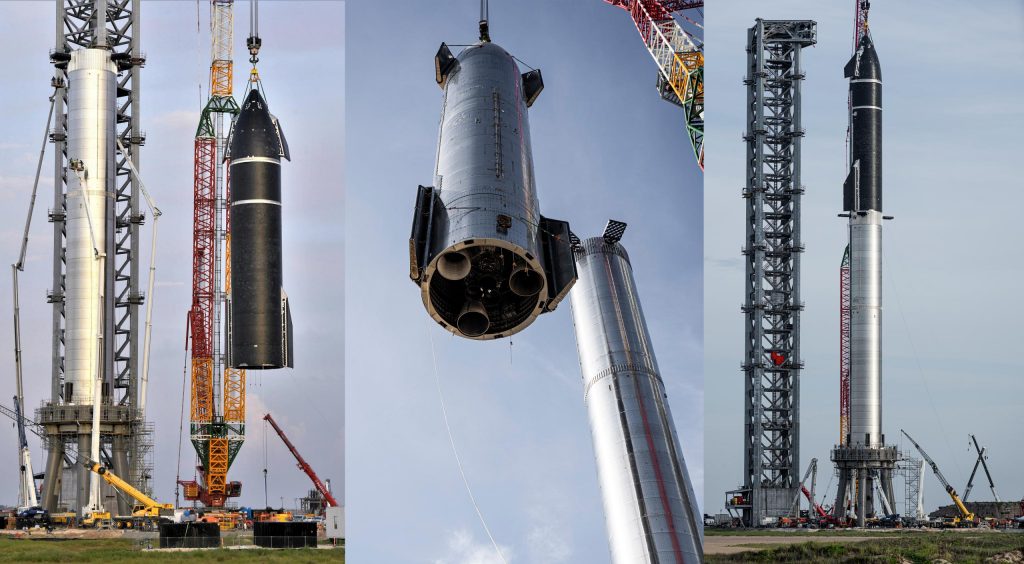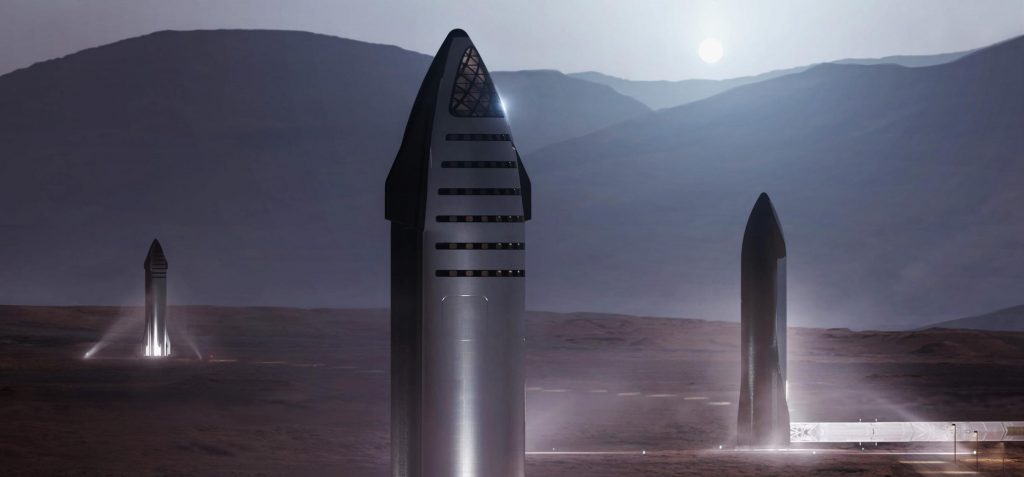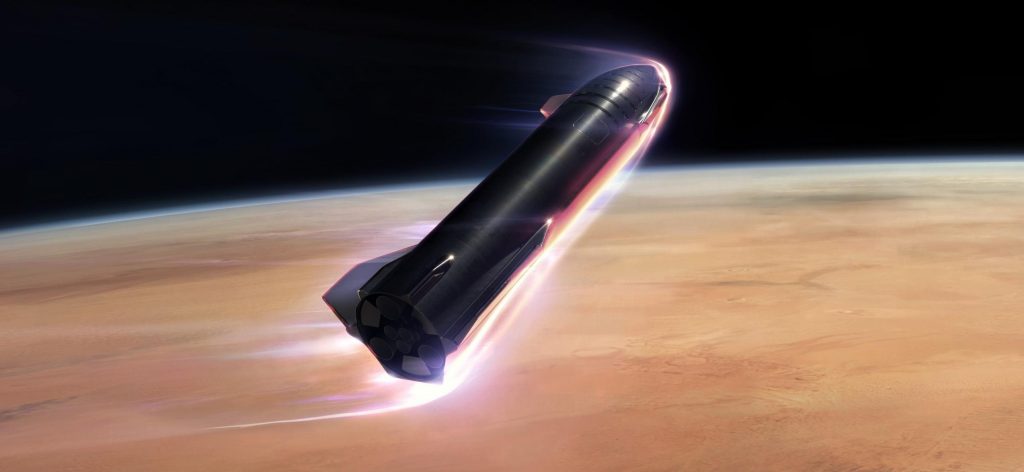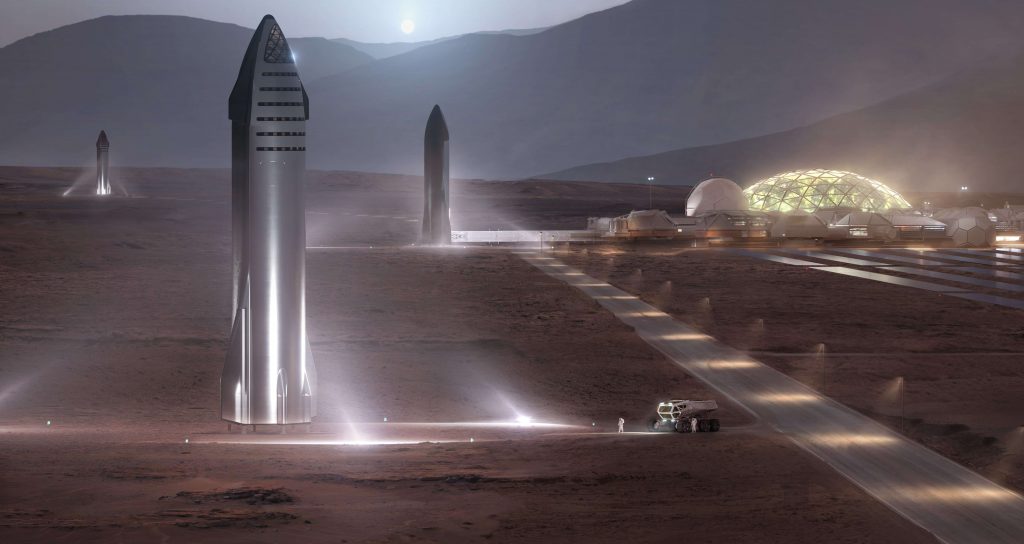For the first time, SpaceX has teamed up with researchers from NASA and several other US institutions to publicly discuss how it plans to use Starship to build Mars Base Alpha.
Save for a handful of comments spread around the periphery of SpaceX and CEO Elon Musk’s main focus, Starship itself, the company and its executives have almost never specifically discussed how the next-generation fully-reusable rocket will be used to create a permanent human presence on Mars. For the most part, that clear focus on near-term hurdles is hard to fault. Half a century of mostly theoretical analysis has made it abundantly clear that a permanent and sustainable extraterrestrial human outpost is impossible without a radical reduction in the cost of access to space. For decades, NASA has studied and studied and studied slight variations of a plan that would cost hundreds of billions of dollars to send a few astronauts to Mars for a few months at a time.
Put simply, without a revolution in space transport, even a temporary presence on Mars where inhabitants are mostly dependent on imported goods is infeasible unless Mars exploration is made a national or international priority on the order of tens of billions of dollars per year. Over the 80-90 years that spaceflight has been seriously pondered, dozens of groups and papers and studies and space agencies have imagined what that revolution might look like and SpaceX is not unique for proposing a solution to that longstanding problem. However, SpaceX is the first of that long list of contenders to propose a solution and both invest significant resources and put hammer to metal in an attempt to make that vision real.

Two years after SpaceX announced its intention to build that next-generation space transportation system, Musk revealed a radical design change and work on the first steel Starship prototypes began. Three years later, SpaceX has completed nine Starship test flights – four brief hops and five flights above 10 km (6 mi). In 2021 alone, SpaceX completed four of those high-altitude flight tests, recovered a high-altitude prototype intact for the first time, built the first orbital-class ship and booster prototypes, began testing that ship, and is nearly finished the first orbital Starship launch site from scratch. In April, SpaceX also secured a $2.9 billion NASA contract to build a human-rated Moon lander variant of Starship.
Put simply, SpaceX – and now NASA with it – has laid a sturdy foundation upon which Starship will almost certainly be realized. A great deal of work remains but SpaceX has more or less surmounted most of the major technical hurdles that towered over Starship/BFR/ITS just a few years ago. A wealth of Starship ground and flight tests have firmly demonstrated that the rocket’s structures, avionics, Raptor engines, exotic methods of descent and landing, and previously unflown fuel of choice are all ready for orbital flight. From then on, SpaceX will still need to prove out Starship’s massive, ceramic, non-ablative heat shield technology; mature orbital rocket refueling techniques and technologies; and finally operationalize all the above to make the rapid launch, reuse, and refueling of the largest rocket in history routine and mundane – something SpaceX has proven to be more than capable of with Dragon and Falcon.
How, then, will SpaceX proceed to the Red Planet?
Packing for Mars
With the help of coauthors from NASA Ames, SETI, and half a dozen prestigious US universities and institutes, SpaceX has begun to answer exactly that question in a 2021 whitepaper [PDF] submitted for the National Academies’ next Planetary Science and Astrobiology Decadal Survey. While that survey alone could influence NASA as the agency prepares to outline its next decade of space science and determine the ultimate destination of tens of billions of federal dollars, the consequences of which could be immense, SpaceX also used the paper to describe its plans for early missions to Mars in unprecedented detail.
As has always been the plan, SpaceX will begin the process of constructing sustainable cities on Mars with a few (relatively) simple steps. Likely as soon as the mid-2020s, SpaceX will begin launching uncrewed Starships to Mars to both verify the system’s maturity and readiness and “deliver significant quantities of cargo to the surface in advance of human arrival.” Likely leaning on a wide range of robotics, those early missions will help SpaceX characterize local resources, stage supplies, test technologies for long-duration Martian surface ops, and begin developing infrastructure – with a propellant plant likely the most pressing need. None of that is surprising. However, there’s more.

According to the authors, which include several current and former SpaceX engineers, “current SpaceX mission planning [tasks those early uncrewed Starships with delivering] equipment for increased power production, water extraction, LOX/methane production, pre-prepared landing pads, radiation shielding, dust control equipment, exterior shelters for humans and equipment, [and more – all hardware needed to support the first human base.]”
Further, confirming what’s been assumed to be the plan for years, “humans will likely live on [Starships] for the first few years until additional habitats are constructed” and “the first wave of uncrewed Starships can also be relocated and/or repurposed as needed to support the humans on the surface,” serving as “valuable assets for storage, habitation, [scientific laboratories], and a source of refined metal structures and resources.” The paper also states that “SpaceX is aggressively developing Starship to…conduct initial test flights to Mars…as soon as 2022 [or 2024]” and even raises the possibility of SpaceX launching the first Starship(s) to Mars before the rocket’s first lunar mission but then launching a separate lunar mission and landing a different Starship on the Moon while the Marsbound ship or ships are still in transit.

The whitepaper marks the first time that SpaceX (or those familiar with the company’s plans) has properly fleshed out the basics of its first crewed and uncrewed Starship missions to Mars and confirms a great deal of well-informed speculation. Namely, SpaceX appears to intend to pack even the very first Mars-bound ships with supplies. But even if they don’t bring much, the first Martian immigrants – launched in batches of “10-20 people” alongside “100+ metric tons” (~220,000+ lb) of cargo – will reuse all surviving Starships as pre-emplaced habitats, storage tanks, and raw material feedstock. Early cargo will focus on power, water, and propellant production, as well as shelters, radiation shielding, and the construction of prepared landing pads. Unsurprisngly, early residents will likely make the Starships that carry them to Mars their first homes on the surface of the Red Planet, taking advantage of an ~1100m³ (~39,000ft³) pressurized volume already outfitted to keep dozens of people alive and healthy in deep space for months at a time.

